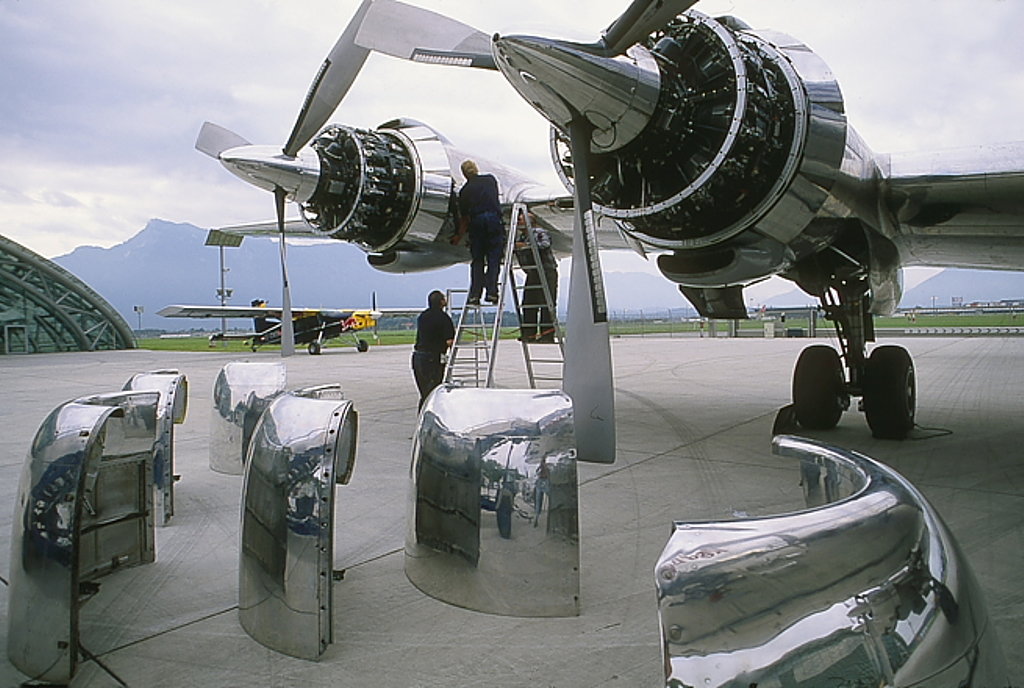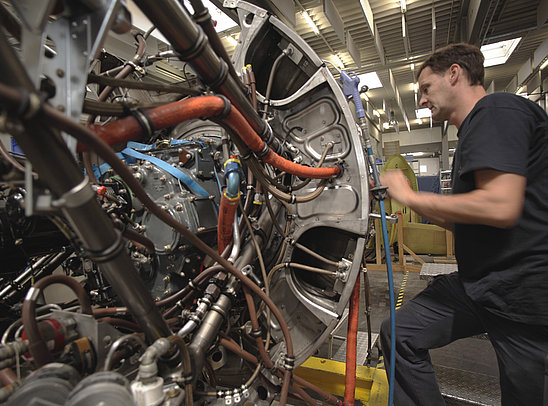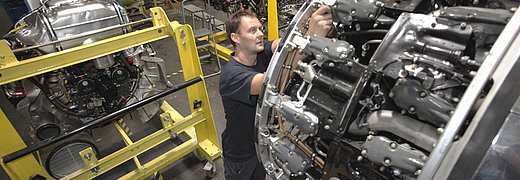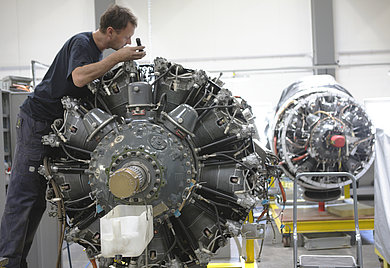Lords of the pistons
Lots of fascination, lots of technology: when a Pratt & Whitney R2800 with 18 cylinders and a displacement of 46L powers the propellers with 2,100HP, this rarely leaves anyone cold. The rumbling sounds and low frequencies are music to the ears and this “dinosaur” among radial engines has been fascinating generations of pilots, passengers and aviation fans.
To preserve this kind of fascination for future generations and keep the engines purring, Warren Varney, Don Landl and Martin Lösch of the Flying Bulls are putting their heart and soul into keeping the fleet’s radial engines in a good shape. For the DC-6 alone, at least two completely refurbished R2800 are always kept in stock. If the engine has to be replaced, it only takes the two technicians two days to put in a new one.
Time is generally of the essence with the four-engine plane, as especially in summer the big star of the Flying Bulls fleet is in high demand, making potential downtimes a problem. However, with the replacement engines always at the ready, the technicians have enough time to work on any damages. In case of more severe defects, for instance of the crankshaft or connecting rod, the engine is packed on a pallet and shipped off to Anderson Aeromotive Inc. in Idaho, USA. They are certified specialists in radial engines and dispose of the biggest spare parts center in this field.
Most spare parts can still be bought new, which isn’t much of a surprise considering that 120,000 of theseplanes were built. Major damages of this type of engine still remain the exception and it only has to be dismantled for inspection after 2,000 hours in operation. However, a general overhaul of the venerable engine takes a bit longer. When the restored engine returns from Idaho, it still takes our team about 400 hours of work to get it ready for use, as power plants and engine periphery first have to be installed.
After all, every cylinder is equipped with an exhaust and cylinder head temperature sensor as well as a total of 26 heating elements to support cold starts in winter. Every cylinder has its own heating, making a total of 18 for a single engine, adding to that four heating packs for the oil tank and another four for the crankcase.
Fitting the cableforms takes the technicians a full week – for every engine, that is! Once everything is in place, the actual mounting of the engine is relatively easy though. Mounted with four bolts and making use of quick fasteners for all fuel lines and plug connectors for the cableforms, the final steps of engine installation are almost a walk in the park.
According to Lösch, the airlines used to do engine changes in only one night. The Flying Bulls dedicate a bit more time to this endeavor, getting the job done in two days.



